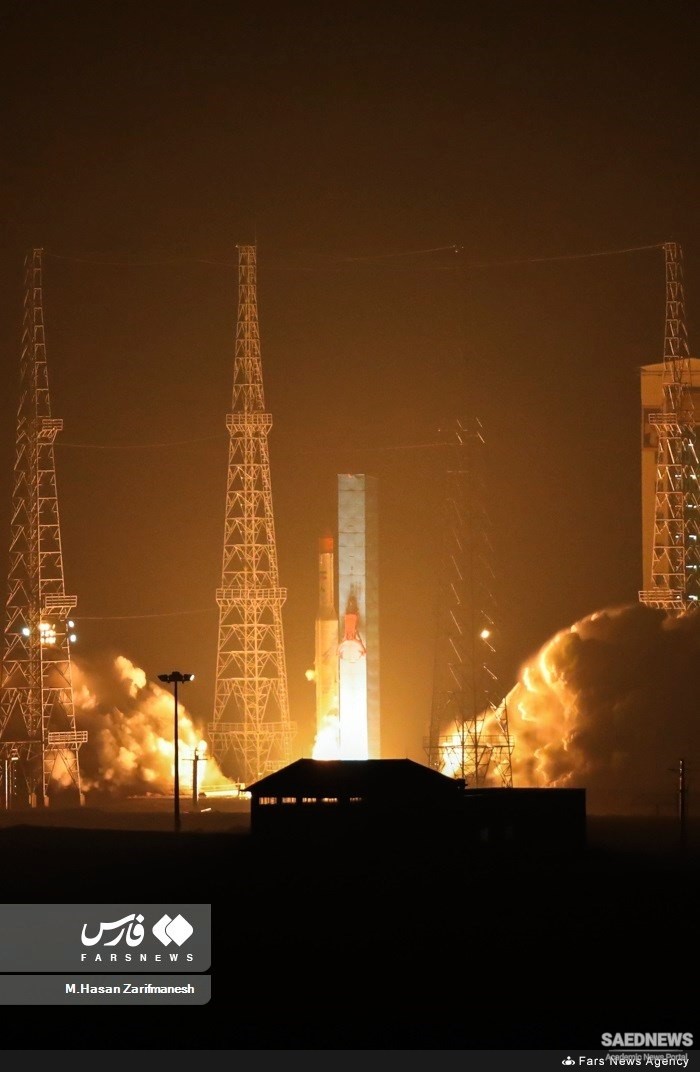SAEDNEWS: Iran sent three homegrown satellites, dubbed “Mahda”, “Keyhan-2” and “Hatef-1”, into orbit from Imam Khomeini Space Launch Terminal in Semnan Province on Sunday with a minimum altitude of 450 kilometers and a maximum of 1,100 kilometers above the Earth's surface.
The satellites were launched by the homemade satellite launch vehicle, dubbed “Simorgh”.

It’s the first time that Tehran has launched three domestically-developed satellites into orbit simultaneously.
Iran has taken giant strides in the field of science of technology in recent years, despite US sanctions and threats, and is among the world's top 10 states capable of building and launching satellites. Iranian officials say Tehran should access all aspects of space technology in various cultural, scientific, economic and defense fields, and no resolution prevents the country from continuing its space program.
Mahda is a research satellite designed, manufactured, assembled and tested at the Iranian Space Research Center. Weighing 32 kilograms, it is a lightweight satellite developed to test advanced satellite subsystems. Its main task is to assess the performance of the Simorgh launcher in multiple injections of space cargo at low altitudes, as well as evaluate new designs and the reliability of indigenous technologies in space.
Keyhan-2 and Hatef-1 nanosatellites were also designed and developed for launch by Iran Electronics Industries, a state-owned subsidiary of the Iranian Defense Ministry. Both are cubic nanosatellites weighing less than 10 kilograms.
Hatef-1 seeks to prove the use of narrowband communication technology on the internet of things (IoT). Keyhan-2 is developed for space-based positioning. It has status determination and control subsystems to aim stably and precisely towards the Earth.


 ‘U.S. policy toward the war has been nothing other than hypocritical’: GU professor
‘U.S. policy toward the war has been nothing other than hypocritical’: GU professor














































